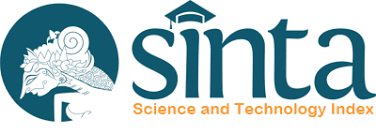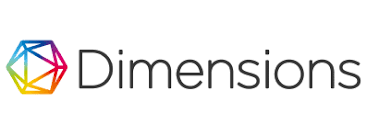Virtualization of E-Health Communication Media on E-Health Halodoc
(1) LSPR Communication & Business Institute
(2) LSPR Communication & Business Institute
(*) Corresponding Author
Sari
Especially in times of pandemic, health is very important and irreplaceable. People often seek health information through health communications media. Various forms of health communication compete to spread their wings and evolve to provide the best information. Health magazines are one of the health communication media that provide information on health and healthy lifestyles, followed by various radio stations and television programs. With the development of technology, including the Internet, digital media providing health information has also become prevalent, from simple health information portals to virtual media in the form of applications that enable two-way interaction. This research literature review focuses on mass media and its development, the development of the Internet and its application to the Halodoc electronic health media platform. Globalization is also the reason behind the development of the Internet. The researcher also describes four eras with the best means of communicating time and technological determinism. There are pros and cons to using e-Health Halodoc as your e-Health media platform. The results of this research prove that Internet development and technology can not be separated. These two things play an important role in mutual development, especially in medical media.
Teks Lengkap:
PDFReferensi
Adoni, H., & Nossek, H. (2001). The New Media Consumers: Media Convergence and The Displacement Effect. The European Journal of Communication Research, 59-83.
Andra. (2019, November n.d). Halodoc Konsultasi Dokter. Dipetik June 23, 2022, dari recode.id: www.recode.id https://www.recode.id/halodoc-konsultasi-dokter/
Bender, J., Cyr, A., Arbuckle, L., & Ferris, L. (2017). Ethics and Privacy Implications of Using the Internet and Social Media to Recruit Participants for Healthresearch: A Privacy-by-Design Framework for Online Recruitment. Journal of Medical Internet Research, 19(4), -.
Benetoli, A., Chen, T., Schaefer, M., Chaar, B., & Aslani, P. (2017). Do Pharmacist use Social Media for Patient Care? International Journal of Clinical Pharmacy, 364-372.
Chen, J., & Wang, Y. (2021). Social media use for Health Purposes. Journal of Medical Internet Research, 23(5), -.
Cherrez-Ojeda, I., Vanegas, E., Felix, M., Mata, V., Jimenez, F., Sanchez, M., et al. (2020). Frequency of Use, Perceptions and Barriers of Information and Communication Technologies among Latin American Physicians: An Ecua Dorian Cross-Sectional Study. Journal of Multidisciplinary Healthcare, 13, 259-269.
Crilly, P., Jair, S., Mahmood, Z., Moin Khan, A., Munir, A., Osei-Bediako, I., et al. (2019). Public Views of Different Source of Health Advice: Pharmacist, Social Media and Mobile Health Applications. International Journal of Pharmacy Practive, 27(1), 88-95.
Effendi, M. (2010). Peranan Internet sebagai Media Komunikasi. Jurnal Dakwah dan Komunikasi, 130-142.
Hennessy, C., Smith, C., Greener, S., & Fems, G. (2019). Social Media Guidlines: A Review for Health Professionals and Faculty Member. -: -.
Iskandar, D. (2017). Ideological Representation of Power in Media Convergence. Journal of Education and Social Sciences, 225-230.
Jin, Y., Austin, L., Vijaykumar, S., Jun, H., & Nowak, G. (2019). Communicating about infectious disease threats: Insights from public health information officers. Public Relations Review, 167-177.
Latuheru, M., & Irwansyah. (2018). Aplikasi Traveloka sebagai Bentuk Konstruksi Sosial Teknologi Media Baru. Jurnal Komunikasi dan Kajian Media, 46-57.
Liliweri, A. (2011). Dasar-Dasar Komunikasi Kesehatan. Jakarta: Pustaka Pelajar.
Mabruri, A. (2013). Panduan Penulisan Naskah Televisi. Jakarta: PT. Gramedia.
McLuhan, M. (1999). Understanding Media - The Extension of Man. London: Routledge.
McLuhan, M., & Fiore, Q. (1967). The Medium is The Message: An Inventory of Effects. New York: Bantam Books.
Nurudin. (2017). Perkembangan Teknologi Komunikasi. Jakarta: Raja Grafindo Persada.
Pamungkas, C. (2017). Global Village dan Globalisasi dalam Konteks ke Indonesia. JGC - E-Journal Unair, n.d.
Ranschaert, E., Van Ooijen, P., McGinty, G., & Parizel, P. (2016). Radiologists Usage of Social Media: Results of the Ransom Survey. Journal of Digital Imaging, 29(4), 443-449.
Ratnasari, A. (2008, June). Komunikasi Kesehatan: Penyebaran Informasi Gaya Hidup Sehat. Jurnal Komunikasi Mediator, 1-12.
Reidy, C., Klonoff, D., & Bamard-Kelly, K. (2019). Supporting Good Intentions with Good Evidence: How to Increase the Benefits of Diabetes Social Media. Journal of Diabetes Science and Technology, 13(5), 974-978.
Saefudin, A. (2008). Perkembangan Teknologi Komunikasi: Perspektif Komunikasi Peradaban. E-Journal Unisba, 383-392.
Sallam, M., Dababseh, D., Yaseen, A., Al-Haidar, A., Taim, D., Eid, H., et al. (2020, December 12). COVID-19 misinformation: Mere Harmless Delusions or Much More? A Knowledge and Attitude Coss-Sectional Study Among the General Public Residing in Jordan. PLoS ONE, -.
Senthilkumaran, S., Benita, F., Balamurugan, N., & Thirumalakaikolundusubramanian, P. (2020). Social Media for Health Care Education-Can it Make a Difference? American Journal of Emergency Medicine, -.
Soetrisno, M. M. (2010). Media Komunikasi dan Dampaknya Terhadap Kebudayaan: Analisis Pandangan Herbert Marshal McLuhan. Jurnal Ilmu Komunikasi, 25-37.
Spitulnik, D. (1993). Anthropology and Mass media. Annual Reviews of Anthropology, 293-315.
Stefanus, K., & M., E. W. (2018). Wacana Gizi Buruk Asmat dalam Majalah Kesehatan. Jurnal IKON Prodi D3 Komunikasi Massa, 41-51.
West, R., & Turner, L. (2010). Introducing Communication Theory: Analysis and Application. New York: McGraw-Hill Higher Education.
Xiao, S., Li, T., Zhou, W., Shen, M., & Yu, Y. (2020). WeChat-Based mHealth Intention and Preferences among People Living with Schizophrenia. PeerJ, -.
Yu, Y., Li, Y., Li, T., et al. (2020). New Path to Recovery and Well-Bing: Cross-Sectional Study on WeChat use and Endorsement of WeChat-Based MHealth among People Living with Schizophrenia in China. Journal of Medical Internet Research, 22(9), -.
DOI: http://dx.doi.org/10.31602/jm.v5i2.8806
Refbacks
- Saat ini tidak ada refbacks.







